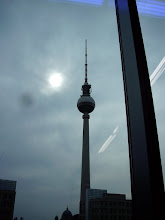Our ancestors or non-French would not have understood the metonymy : “eating a Greek” is eating a sandwich. But what disturbs is not the cannibal allusion but the vagueness around the origin of the sandwich. Most of Greek look like Turkish kebabs. And certain Turkish restaurants propose Greek. If you do not understand if "Greek" is Greek or Turkish (and you ask, besides, if the shawarma could not be added to the list of these sandwiches which are alike all), here is an explanation of the big confusion. Why is it said "Greek" even when many distributors of the sandwich in yellow punnet are Turkish (or Arabic) ? The naming was certainly retained in French because the first salesmen in France were mainly Greek. The Turkish immigration, particularly entrepreunariale is more recent. Then the sandwich is called "Greek", even sometimes at the Turkish restaurant owners. Why to say that your sandwich is "Greek" if you know that it is Turkish? A restaurant owner answers: " When we settled down, everybody already called this sandwich "Greek", thus we gave it the name which people here know. But "Greek" and döner are different originally: "Greek", it is some minced meat then trained altogether and burned(blown) out, while the döner, they are fragments of meat stuck together, and then burned out. "Before being a sandwich, the döner kebab is a dish. Now, this dish is originally Turkish ("döner kebab " significant "to turn" and " burned out meat "). Its inventors would be Turkish soldiers of the Middle Ages who, in Anatolia, used their sword to burn out fragments of meat by turning them above a fire. The Ottoman Empire sheltered a large number of nomad communities. During the dates historians debated of the food, the döner gained a Greek equivalent, the "gyros", of Greek "to turn", and an equivalent in the Arabic regions, the shawarma. The date of the passage of the horizontal brooch in the vertical brooch is badly known; however, a Turkish family of Bursa claims the invention, in the XIXth century, of the " vertical barbecue ". Gas grill and automatic brooch then replaced coal and crank. The migrations of the Turks, the Greeks and the Arabs towards the western countries in the XXth century spread the dish up to the papillae of western urbans and with its Turkish community of about 124 000 inhabitants, Berlin became the capitable of the döner. Lover of the döner kebab at the exit of disco, which defies the dietical correct by claiming this moment as the best to appreciate the sandwich, please thank Mehmet Aygun. Turk immigrated in Germany, he worked in the restaurant of his uncle in Berlin and thought, one day of year 1971, of putting the meat burned out in a Mediterranean bread. The key of the success was in the passage of "in the spot" to " to take away". And to add a yoghourt sauce, also called white sauce. The difference of preparation of the meat, the accompaniment and the sauce gives two very different sandwiches, to compare of authentic gyros and kebab. If we said "Turkish" for döner kebab and "Greek" for gyros, we would fight a little against the standardization of these sandwiches, which stop by all being alike.
Subscribe to:
Post Comments (Atom)



No comments:
Post a Comment